

|
132.859 bytes |
Product Information |
Document ID: DDSE-42ZJ4Y |
Netfinity 5500 - Input / Output Ports and Connectors for External Options
Applicable to: World-Wide
Input/Output Ports and Connectors: The input/output (I/O) connectors are for attaching external devices, such as printers, keyboards, and displays, to your server. The I/O connectors on your server include:
- Two serial-port connectors
- One systems management connector
- One parallel-port connector
- One video-port connector
- One keyboard-port connector
- One auxiliary-device-port connector
- One Ethernet-port connector
- Two USB-port connectors
See the illustration in Input/Output Connectors and Expansion Slots on page 194 for the locations of the connectors.
Serial Ports: Your server comes with two serial ports. (See "Input/Output Connectors and Expansion Slots" for the locations of the connectors.) These ports are used to communicate with printers, plotters, external modems, scanners, and auxiliary terminals. These ports also enable you to transfer data between computers.
Serial ports can transfer data asynchronously, which means that they can transmit any number of characters at any time, with no restriction on the duration of the pauses between characters.
The serial ports can transmit and receive data and commands at rates of from 300 bits per second up to 115 000 bits per second.
Serial port A is shared by the operating system and the integrated system management processor. Serial port B
can be used by only by the operating system.
Each serial port has a 9-pin, male D-shell connector on the back of the server. The pin-number assignments of this
connector conform to the industry standard.
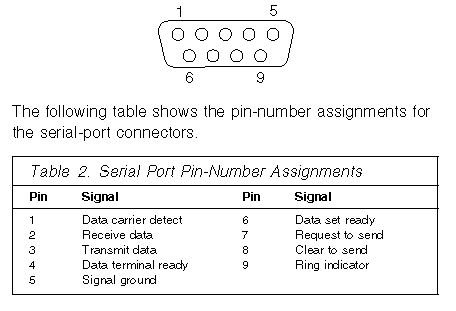
When you turn on your server, the POST routine assigns the serial ports to specific communication port addresses.
Some application programs use only certain ports, and some modems are designed for use only at certain communication port addresses. You might need to use the Configuration/Setup Utility program to change communication port address assignments to resolve conflicts.
Management Port C: Your server has a dedicated systems management I/O port. This port can be used to attach a modem that is dedicated to communication with the system management processor.
The connector on the back of the server and the pin-number assignments are the same as for the serial ports.
Parallel Port: The parallel port usually is used to communicate with printers, and transfers data one byte at a time. The parallel port has a 25-pin, female D-shell connector on the back of your server. It support three standard IEEE 1284 modes of operation: Standard Parallel Port (SPP), Enhanced Parallel Port (EPP), and Extended Capacity Port (ECP). (See
"Input/Output Connectors and Expansion Slots" for the location of the connector.)

The following table shows the pin-number assignments for the parallel-port connector.
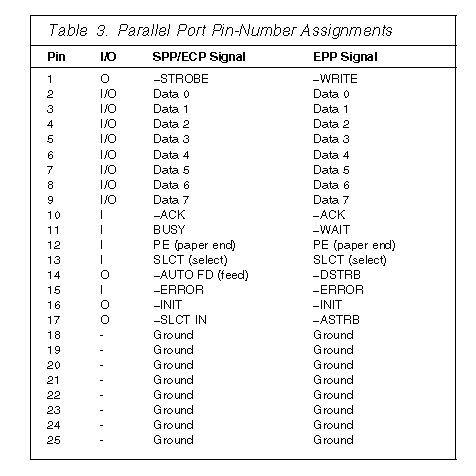
When you turn on your server, the POST routine assigns the parallel port a specific port address. You can change the parallel-port assignment by using the Configuration/Setup Utility program.
Video Port: The system board in your server has one SVGA video port. This port is used to attach a video monitor. The video port has a 15-pin analog connector on the back of the server. (See "Input/Output Connectors and Expansion Slots" for the location of the connector.)

The following table shows the pin-number assignments for the video connector.
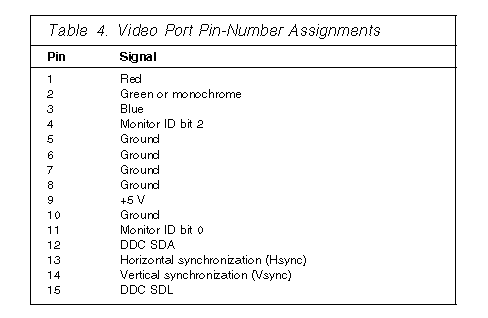
Keyboard and Auxiliary-Device Ports: The system board has one keyboard port and one auxiliary-device port that supports a mouse or other pointing device. (See "Input/Output Connectors and Expansion Slots" for the locations of the connectors.)
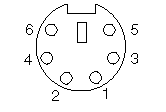
The following table shows the pin-number assignments for the connectors used by the keyboard and auxiliary-device
ports.
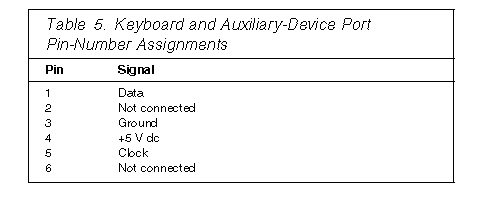
Ethernet Port: The system board in your Netfinity 5500 contains an Ethernet controller. The controller has an external RJ-45 connector on the rear of the server that is used with a category 3, 4, or 5 unshielded twisted-pair (UTP) cable. The connector enables an Ethernet network to attach to the internal transceiver in your server.
|
Note |
See "Configuring the Ethernet Controller" for additional information about the Ethernet controller.
Table 6 shows the pin-number assignments for the RJ-45 connector. These assignments apply to both 10BASE-T and 100BASE-TX devices.
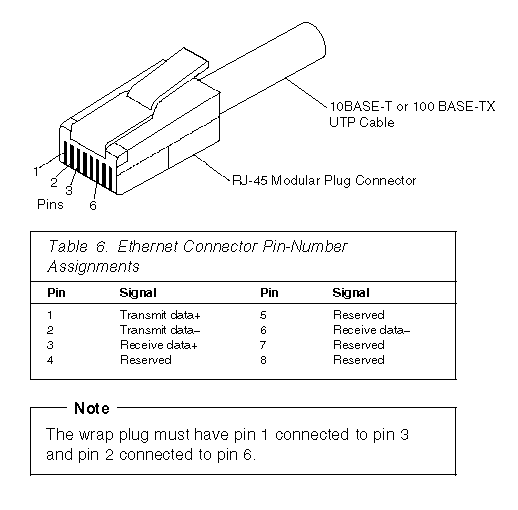
Universal Serial Bus Ports: The system board in your Netfinity 5500 contains two universal serial bus (USB) ports. Each USB port has an external connector on the rear on the server for attaching devices that previously used serial, parallel, keyboard, mouse, and game ports. USB is an emerging serial interface standard for telephony and multimedia devices. USB technology uses Plug and Play to determine what device is attached to the connector. Each USB device is accessed by a unique USB address. A device called a hub is used to convert the USB port into multiple attachment points. A hub has multiple ports where peripherals can be attached. USB provides 12 megabits-per-second (Mbps) bandwidth with a maximum of 63 peripherals and a maximum signal distance of five meters (16 ft.) per segment.
|
Note |
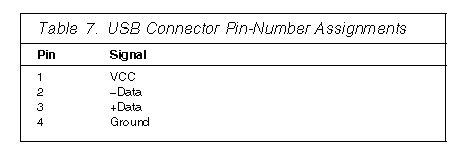
|
Search Keywords |
| |
|
Document Category |
Diagrams | |
|
Date Created |
09-12-98 | |
|
Last Updated |
09-12-98 | |
|
Revision Date |
09-12-99 | |
|
Brand |
IBM PC Server | |
|
Product Family |
Netfinity 5500 | |
|
Machine Type |
8660 | |
|
Model |
ALL | |
|
TypeModel |
| |
|
Retain Tip (if applicable) |
| |
|
Reverse Doclinks |